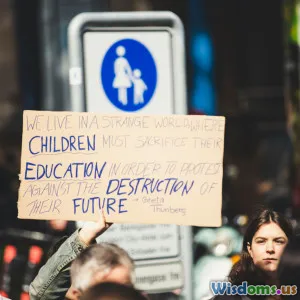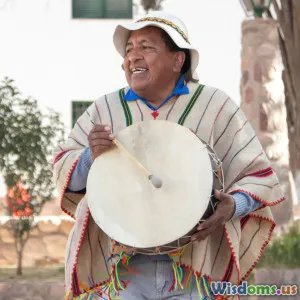
Cultural Identity in the Digital World
8 min read Explore how digital platforms shape cultural identity across diverse societies. (0 Reviews)
Cultural Identity in the Digital World
Introduction
In an era where the internet permeates every aspect of our lives, the intricate relationship between culture and technology has never been more critical to understand. Digital platforms have transformed how we communicate, express ourselves, and connect with others. As we navigate this vast cyber landscape, we're continually redefining our cultural identities in ways that prior generations could hardly imagine. How do online interactions and the digital sphere influence our sense of self? Are our cultural identities being fragmented or enriched by these advances?
The rapid growth of internet access and social media engagement across the globe has rendered geographical boundaries almost meaningless. With each click, tweet, and post, people are shaping the narrative of their identity, sometimes integrating features from multiple cultures, traditions, and experiences. This article explores the complexities of cultural identity in the digital world through various lenses, supported by examples, data, and insights.
The Digital Revolution and Cultural Identity
As technology advances, it alters social constructs, and cultural identity is no exception. With platforms such as Facebook, Instagram, TikTok, and Twitter, individuals have more autonomy than ever before to showcase their cultural narratives. This shift presents both opportunities and challenges.
The Amplification of Diverse Narratives
In traditional settings, cultural expression often faced constraints, limited by geography, accessibility, and socio-political factors. However, digital spaces allow for a myriad of voices to be amplified. For example, indigenous communities worldwide have utilized social media to share their cultures, languages, and issues while gaining global attention. The #NativeAmericanHeritageMonth campaign on social media platforms led to increased visibility of native cultures, fostering solidarity and awareness not previously possible.
Case Study: Black Lives Matter
The emergence of the Black Lives Matter (BLM) movement stands as a testament to the power of digital platforms in shaping cultural identity and social movements. Initially, a hashtag on Twitter, BLM facilitated a global discourse on racial justice—effectively uniting individuals from varying backgrounds to rally around shared values. The movement's digital presence helped breach ideological boundaries, proving that collective cultural identification could prosper through shared online experiences.
The Role of TikTok in Cultural Exchange
Apps like TikTok have revolutionized how culture is shared and practiced by allowing users to curate their identities through easily digestible, short-form video content. The “cultural appropriation vs. cultural appreciation” discussions have gained traction on this platform, often provoking discourse among younger generations who navigate their cultural identities. For instance, viral dances often attributed to specific cultural origins prompt conversations about ownership and ecological integrity.
The Challenges of Digital Cultural Identity
While the digital landscape provides a platform for self-expression, it also poses challenges, notably cultural homogenization and misrepresentation.
Cultural Homogenization
As global access to information increases, there is a growing concern for cultural homogenization, where unique cultural identities begin to fade into a monolithic global culture. Take the proliferation of Western media as an example. As consumers increasingly gravitate toward Hollywood films, Western music styles, and fast-food chains, there are worrying implications for local traditions and practices across the globe. Cultural loss is an enduring concern, with organizations like UNESCO emphasizing the importance of preserving cultural heritage in an age dominated by the uniformity of digital platforms.
Misrepresentation and Stereotyping
The digital world is also rife with misinformation and stereotypes, often leading to one-dimensional portrayals of entire cultures. When individuals from outside a culture misinterpret symbols or practices, the inherent meanings can be distorted, perpetuating harmful stereotypes. The controversy surrounding the portrayal of Asian cultures during various pop culture phenomena is a relevant case. Videos and memes often reduce nuanced cultural practices to trends, stripping away the complexity that often characterizes true cultural identity.
The Impact of Global Digital Communities
Another vital aspect to consider is the formation of global communities online that transcend physical borders, giving rise to “digital natives” who are accustomed to collaborating, learning, and socializing in virtual settings. This phenomenon has vastly affected cultural identity.
Transnational Identities
As digital platforms foster global conversations, transnational identities emerge—cultural identities that blend different geographical elements. Take the cosplay community, where enthusiasts worldwide come together to represent characters from various cultures and media. By participating in this worldwide phenomenon, individuals often find coherence between their interests and their own backgrounds, forming an intricate tapestry of identity.
Bridging Cultures through Language
Language is the bedrock of cultural identity, and digital platforms have catalyzed its evolution. Apps and websites facilitate both the learning and celebration of diverse languages. Services like Duolingo and Memrise exemplify how technology fosters appreciation for linguistic diversity, enabling individuals from around the world to connect over shared phrases and expressions. These connections can foster a sense of belonging, regardless of physical location.
Conclusion: Embracing Complexity in Cultural Identity
The digital world undeniably provides a new dynamic to understanding cultural identity. It offers tools and platforms that enable individuals to celebrate their heritage and convey their narratives while posing challenges that require critical examination. As society becomes increasingly interconnected through digital means, the importance of preserving the nuances and complexities of cultural identity cannot be overlooked.
To navigate this continuously evolving digital landscape successfully, individuals must actively engage in conversations surrounding cultural appropriation, representation, and authenticity. As the digital world advances, we must recognize and embrace the multiplicity of cultural identities, acknowledging the power of technology to enrich as well as challenge who we are.
In this quest to reaffirm our identities amid globalization and digitization, let us find ways to foster empathy, understanding, and deep appreciation for the cultural diversity that shapes our world. Only through a collaborative, empathetic engagement can we cultivate authentic cultural representation that reflects the vibrancy of our human experience in the digital age.
Rate the Post
User Reviews
Popular Posts





















